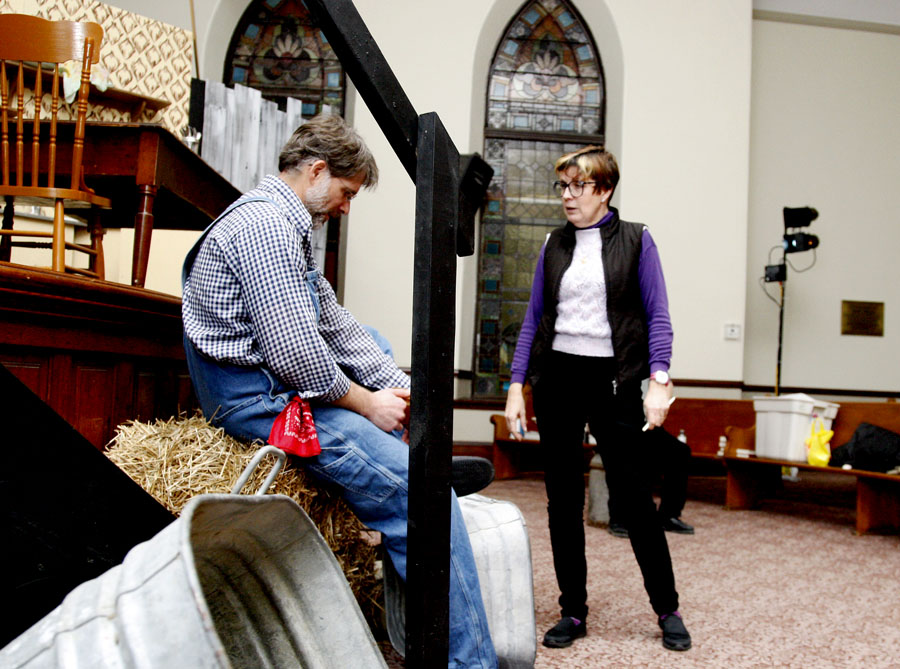
(Director Lisa Leroux gives Paul Duchesne some pointers during a rehearsal of The Drawer Boy.)
Sometimes, when you lose an argument, the best thing to do is to strap on your tool belt.
That’s what Lance Besharah did, more than two years later, when a local group of which he was a part lost its argument that the former Trinity Anglican Church should be repurposed as a venue for the arts.
To be sure, the argument at the time was sound, the only logic failing the proposal being financial.
Then there was Besharah’s broader argument about what the fate of Trinity, a house of worship deconsecrated and consigned to the ignoble fate of having its bells stolen and its doom sealed by red ink, has to tell us about the future of Brockville’s other majestic downtown churches.
Some of those churches, faced with declining congregations and escalating operating and maintenance costs, might be in danger of disappearing, replaced by “plastic condominiums,” Besharah warned in 2014.
St. John’s United Church, thankfully, is not in the same position as the former Trinity was when the St. Lawrence Anglican parish made the difficult decision to deconsecrate, but, as its own pastor notes, the future remains uncertain.

(Lance Besharah rings in 2016 with the Brockville Concert Band at Wall Street United Church in this Recorder and Times file photo by Darcy Cheek.)
So Besharah strapped on his tool belt and, with help from St. John’s congregants and fellow Youth Opportunities in the Arts members, decided to provide a concrete example of what a repurposed, retrofitted church might have to offer.
What’s even better, the new St. John’s arts venue that opens Thursday with the Brockville Theatre Guild’s production of The Drawer Boy remains a house of worship.
“My purpose was, when someone walks into that building, it’s a church,” said Besharah.
The intersection of consecrated and secular space is nothing new. Besharah points to other churches, such as Centennial Road, that use their sanctuaries as performances spaces.
The difference here is that Centennial Road’s theatrical performances are religious in nature, whereas St. John’s will host a wider variety of shows, concerts and recitals.
Supporters acknowledge there will be some negotiation involved about what kinds of performances are appropriate, and how far artistic licence may go in a sacred space.
Those are negotiations worth having, in order to broaden the use of Brockville’s majestic architectural treasures.
“It gives them more flexibility and more avenues to gain revenue to help support the building,” said Besharah.
“That’s sort of the idea I had in mind for Trinity,” he added.
“I don’t think we have the luxury anymore of having them just as a standalone church with just a few church suppers.”
The marriage of performing arts and worship at St. John’s United is “a good first step” toward one future option for Brockville’s built heritage, he believes.
“Our kids need that kind of legacy,” said Besharah.
It’s not as if we can afford to build these kinds of structures now, he notes.
“Once they’re gone, we’re really in trouble.”